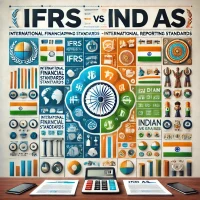A demand schedule is a vital tool in economics that explains how much quantity of a good or service consumers are willing to buy at different prices over a specific period. It clearly shows the inverse relationship between price and quantity demanded. This is a fundamental concept in consumer behaviour; it helps businesses, economists, and policymakers make informed decisions about market demand and sales trends. Studying demand schedules allows firms to plan production better and set competitive prices to forecast revenues.
What Is the Demand Schedule?
A demand schedule is a table that shows different quantities of a product that consumers are ready to purchase at various price levels, assuming all other factors remain constant. This tool visually supports the law of supply and demand, stating that as price decreases, demand generally increases, and vice versa.
Understanding the Key Features of Demand Schedule
The consumer’s change in reaction to price shifts can then be simplified by looking into the essential features of a demand schedule. The features, therefore, serve as the foundation on which practical analysis of market trends and buyer behaviour can be built.
- Price-Quantity Relationship: It reflects how much of a product people buy at various price levels.
- Consistent Time Frame: It usually applies to a day, week, or month, maintaining uniformity for comparison.
- Ceteris Paribus Assumption: All other influencing factors (like income, preferences) remain unchanged.
Example: Simple Individual Demand Schedule
| Price (₹) | Quantity Demanded (Units) |
| 10 | 100 |
| 8 | 150 |
| 6 | 200 |
| 4 | 300 |
| 2 | 500 |
There are only a few ways for a firm to increase revenue. Now and then, the company keeps improving its price to cover the rising cost of production.
Importance of Demand Schedule
Understanding the demand schedule offers several benefits, particularly for businesses, marketers, and government policymakers. It becomes the roadmap for pricing, production, and consumer behaviour forecasting.
Benefits and Applications
Policymakers and businesses that understand the advantages of a demand schedule apply it in fashion-wise decision-making. It explains how price affects demand and provides direction for production and marketing.
- Helps in Pricing Strategy: Businesses use demand schedules to decide on prices to maximise their profit and customer satisfaction.
- Predicts Consumer Behaviour: Their data estimates how consumers respond to price changes, which benefits marketing and inventory management.
- Informs Supply Decisions: Manufacturers can synchronise supply volumes to expected demand without the penalties of under- or overproduction.
- Guides Economic Policy: Using this consumer demand schedule, policymakers can determine the best taxes for adjusting subsidies and controlling inflation or recession.
- Market Equilibrium Analysis: Combined with supply schedules, it helps find the market equilibrium where supply matches demand.
Types of Demand Schedules
There are two main types of demand schedules: individual demand schedule and market demand schedule. Each serves different analytical purposes.
Individual Demand Schedule
This shows the quantity of a product a single consumer is willing to purchase at different price levels.
Features
- Based on the preferences of a single person or household.
- Assists in micro-level economic studies.
Example
| Price (₹) | Quantity Demanded (Units) |
| 10 | 5 |
| 8 | 10 |
| 6 | 15 |
| 4 | 20 |
This individual demand schedule helps understand a consumer’s buying pattern regarding price.
Market Demand Schedule
A market demand schedule aggregates all individual demand schedules within a specific market.
Features
- Reflects total demand in the economy.
- Ideal for macroeconomic planning and forecasting.
Example
| Price (₹) | Individual Demanded (Units) | Market Demand (Units) |
| 10 | 5 | 500 |
| 8 | 10 | 1,000 |
| 6 | 15 | 1,500 |
| 4 | 20 | 2,000 |
The market demand schedule answers questions about market demand and provides an overview of total consumer demand concerning individual price variations.
Demand Schedule Examples
Let’s examine real-world cases to illustrate how demand schedules work in practical settings. These examples highlight how prices influence demand for different goods.
Example 1: Smartphone Demand
As smartphone prices drop, consumer demand increases, showing a downward-sloping demand schedule and curve.
| Price (₹) | Quantity Demanded (Units) |
| 50,000 | 500 |
| 45,000 | 100 |
| 40,000 | 150 |
| 35,000 | 250 |
| 30,000 | 400 |
Example 2: Coffee Demand in the Market
This market demand schedule for coffee proves that more consumers are willing to buy as prices fall, increasing total daily sales volume.
| Price (₹) | Quantity Demanded (Cups/Day) |
| 100 | 500 |
| 80 | 700 |
| 60 | 1,000 |
| 40 | 1,500 |
| 20 | 2,500 |
Limitations of Demand Schedule
While useful, the demand schedule has several limitations. It simplifies reality by assuming all else remains equal, which rarely happens in dynamic markets.
Key Drawbacks
- Ceteris Paribus is Unrealistic: Real-world markets involve changing incomes, preferences, and policies, making static assumptions less reliable.
- Excludes Non-Price Influences: Factors like advertising, brand image, or availability of substitutes aren’t reflected in a basic demand schedule.
- Lack of Dynamic Adjustments: It only shows data at one point and does not adapt to sudden demand shifts.
- Limited Time Frame: Demand schedules often apply to a short period and miss out on seasonal or long-term changes.
- Poor Predictive Power in Volatile Situations: Events like natural disasters or economic crises can make traditional schedules inaccurate.
Demand Schedule FAQs
1. What is a demand schedule in economics?
A demand schedule is a table that shows how much of a product consumers will buy at various price levels during a set time.
2. What is a market demand schedule?
It represents the total quantity of a product demanded by all consumers in the market at different prices.
3. How does a demand schedule help businesses?
It helps businesses set optimal prices and predict how price changes affect consumer buying behaviour.
4. What’s the difference between a demand schedule and a demand curve?
A demand schedule is a data table, while a demand curve is a graphical representation of that data.
5. What is an individual demand schedule used for?
It’s used to study a consumer’s behaviour and understand how they react to price changes.


